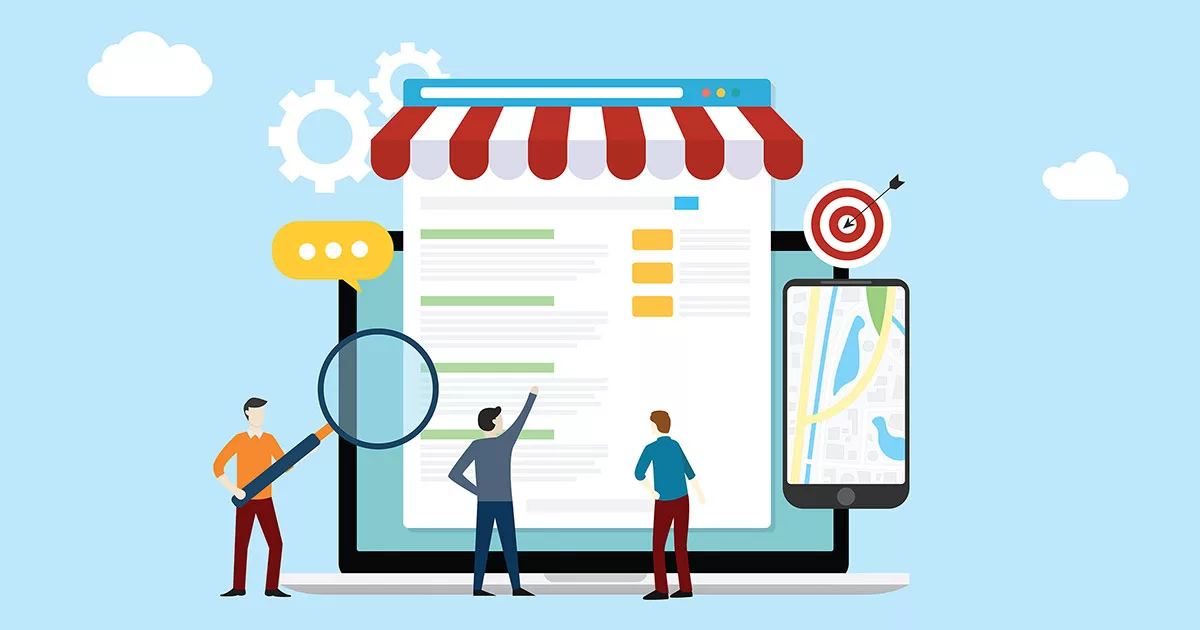By The Pollack Group
A localized marketing strategy can boost visibility and build a loyal customer base, but is often easier said than done for businesses serving large markets and broad customer bases. Fortunately, there are strategies to “advertise local” even if you’re not on the ground in every market. The agency was featured in the Forbes Agency Council’s latest piece, ’15 Ways To Make Ads More Local When Serving A Large Market.’ View the original article on Forbes. The No. 10 contribution is from agency president Stefan Pollack.
10. Customize Ad Copy Through Geotargeting
National and international businesses can use the same images and video across their advertising while inserting customized copy that is specific to a state, city or even neighborhood based on a user’s location. That customized copy can help customers feel as if they are being directly spoken to, even through a far-reaching campaign. – Stefan Pollack, The Pollack Group
—
1. Incorporate Local Testimonials
Incorporate testimonials and case studies from a particular market or “local language” into targeted campaigns. However, be mindful of how a word or phrase will resonate if shared with a broader audience; the word “wicked” in Massachusetts won’t resonate the same way in the Midwest, for instance. – Michelle Abdow, Market Mentors, LLC
2. Replace ‘Local’ With ‘Personal’
If you have a solid understanding of the brand, then it becomes simpler to personalize the message, the media (think digital) and the imagery. Consumers don’t care as much about seeing “local” scenery as they do about feeling as if they are being spoken to directly. – Dave McIndoe, Netwave Interactive Marketing
3. Run A/B Tests
We’ve run campaigns for multinational brands that have different messaging and creative based on the region. We started out with more than one version of our campaign and launched at large. Then, we optimized by city. The end product is so different from one region to the other. – Jonathan Laberge, Reptile
4. Use Microinfluencers
Using microinfluencers can definitely help reach a more regional audience. If a client opens a new point of sale, working with people on the ground that have a high engagement rate will be a plus to get some customer loyalty where it’s needed. Also, working on geotargeted campaigns that highlight retailers in said region will reinforce connections with a local audience, clients and retailers all at once. – Sarah Hamon, S2H Communication
READ MORE: 13 Clever And Effective Content Hacks You Should Know
5. Understand Local User Needs And Personas
Understanding user needs and user personas on a local level is key. Serving customers on a local level entails understanding of market dynamics and trends in the area. Research, analyses and metrics can provide proper answers. It’s all dependent on the company focus and targeted deliverables. No market is too big or too small to serve; it all circles back to processes and best practices. – Goran Paun, ArtVersion
6. Leverage Geotargeting And Zip Code Targeting
We focus on hyperlocal campaigns that not only leverage very specific geotargeting and zip code targeting, but are also highly personalized on the individual level. Hyperlocal campaigns require hyperlocal copy and strategy. We’ve found that, while a bilingual audience in Florida may be overwhelmingly mobile-only, the Northeast has a spread of at least three devices for media consumption. – Michael Kalman, MediaCrossing Inc.
7. Identify The Commonalities Of Your Local Service
Is each store empowered to care for consumers when things go wrong, or do you force angry customers to call a national toll-free number? Is each branch allowed to customize inventory based on local preferences? Do employees from each store participate in local charity events? If so, you can legitimately promote your local focus. – Scott Greggory, MadAveGroup
8. Insert Identifiable And Iconic Local Symbols
Budget can be a barrier to localization. However, if you concept creative with the ability to insert a local identity in an authentic way, you can pull it off. Given the pervasiveness of social media, most consumers can identify iconic symbols from other cities, such as the Golden Gate Bridge in San Francisco, Peachtree Street in Atlanta or the Italian Market in Philadelphia. Insert those iconic flashes along with the voices of the community. – Dean Trevelino, Trevelino/Keller
READ MORE: Five Ways PR Can Grow Your Business
9. Utilize Google My Business
Utilizing Google’s user-friendly Google My Business platform is an easy way to keep locations organized. The GMB account can be handled by a third-party agency that offers this capability, or by delegating various locations to different franchise owners. – Larry Gurreri, Sosemo LLC
10. See Above
11. Create Customizable Templates For Local Markets
For our national clients who enter local markets and need engagement there, we often provide a “marketing-in-a-box” kit consisting of templated press releases that can be customized for local media outlets, localized digital and print ads, PowerPoint presentations for lunch-and-learns with stakeholders and similar turnkey materials. – Jodi Amendola, Amendola Communications
12. Tap Into The Local Culture
It’s important to segment your audience across a large market so that marketing feels more personal and connects with that specific audience in an authentic way. Depending on the product or service, that can mean tapping into the local culture or other unique attributes that only locals would know about. – Jonathan Hanson, Unconquered
13. Leverage Technology To Automate Your Campaigns
With programmatic creative creation and automated location versioning and tracking, effective local marketing is not only feasible, it is actually easy and efficient with the right marketing technology. Using humans for location-based campaigns, especially on a large scale, is a headache for everyone involved. But technology can help you save time, money and mistakes. – William Rodriguez, Silvercrest
14. Use Dynamic Creative
Utilizing dynamic creative can add a local touch to your national brand. If you’re a company with brick-and-mortar locations, you can dynamically insert the nearest location into your ads. Banner ads are the most commonly used ad type for this, but this can be done with video as well. – Donna Robinson, Collective Measures
15. Use Digital Tools To Listen To Customers
In the pro services space, both before and after Covid-19 emerged, we’ve discovered that being local matters little to most service buyers. They want insights, ideas, support, short response times and someone to listen to them. With digital tools such as video conferencing, this can be done nearly as well as being in person. We have clients with a small regional footprint serving clients all over the U.S. and the world. – Randy Shattuck, The Shattuck Group
For more agency insights, visit our WellRed archives






